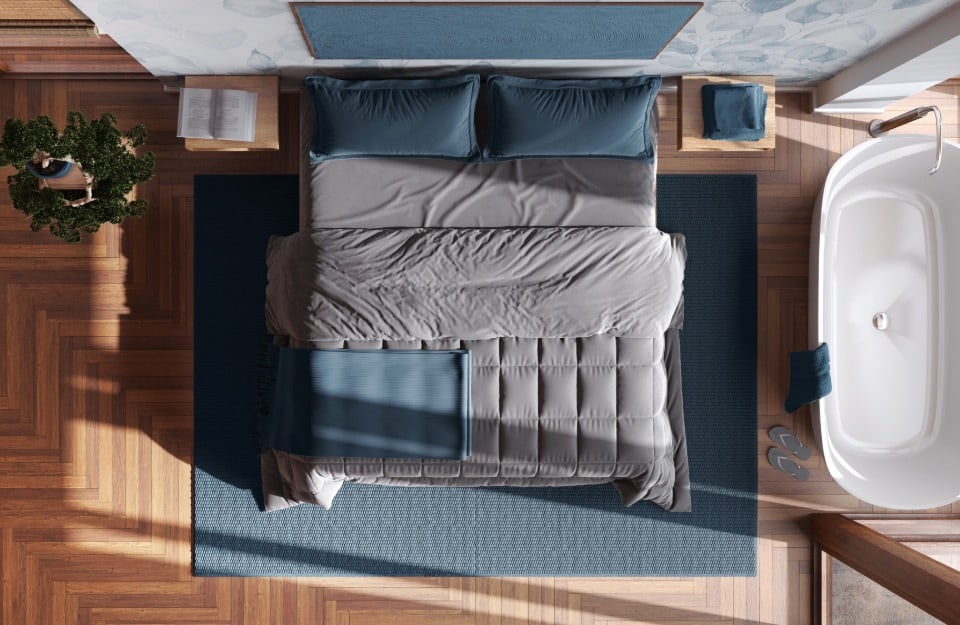With its deep and sophisticated hue, the colour whale blue has quickly entered the colour palettes of interior designers. For some years now, it has been increasingly present in interior design proposals, as well as in magazines and social media. This shade of dark blue recalls the depths of the ocean and the mysterious beauty of whales, offering a tranquil and enveloping atmosphere. Versatile and timeless, it can be used in various roles, from primary colour to delicate accent.
What colour is whale blue?
 The colour whale blue could be defined as a deeper and darker version of sugar paper colour. It is a dark, desaturated shade of blue with a grey component. The name is due to its resemblance to the livery of some whales. It is a sober and elegant colour, widely used in interior design, especially in recent years.
The colour whale blue could be defined as a deeper and darker version of sugar paper colour. It is a dark, desaturated shade of blue with a grey component. The name is due to its resemblance to the livery of some whales. It is a sober and elegant colour, widely used in interior design, especially in recent years.
How many shades of blue are there?
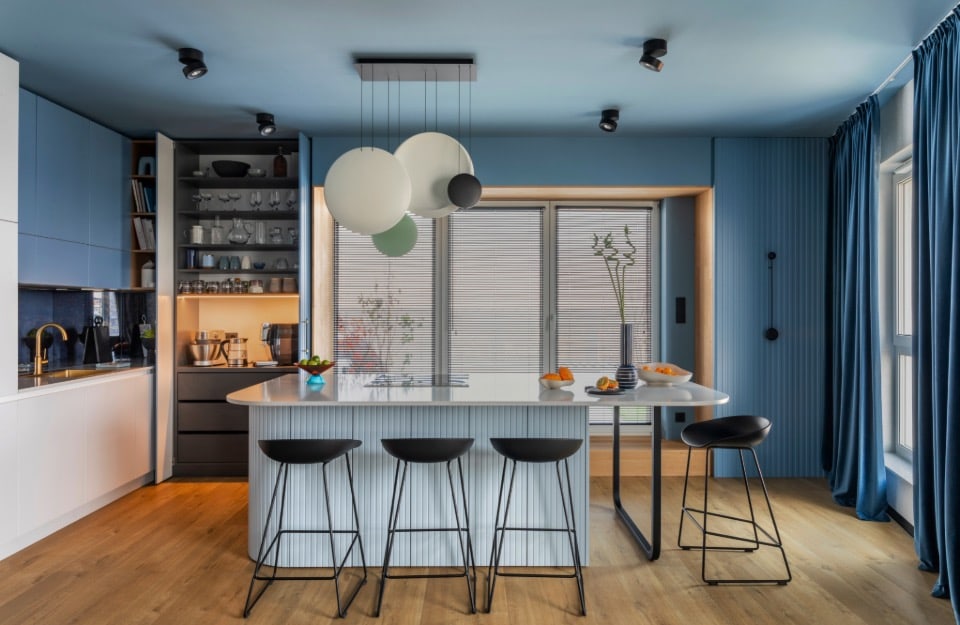 Whale blue is only one of many shades of blue. To name but a few: steel blue, cadet blue, cerulean blue, electric blue… And then air force blue, cobalt blue, cornflower blue. We have devoted an article to the best known ones.
Whale blue is only one of many shades of blue. To name but a few: steel blue, cadet blue, cerulean blue, electric blue… And then air force blue, cobalt blue, cornflower blue. We have devoted an article to the best known ones.
How to match whale blue?
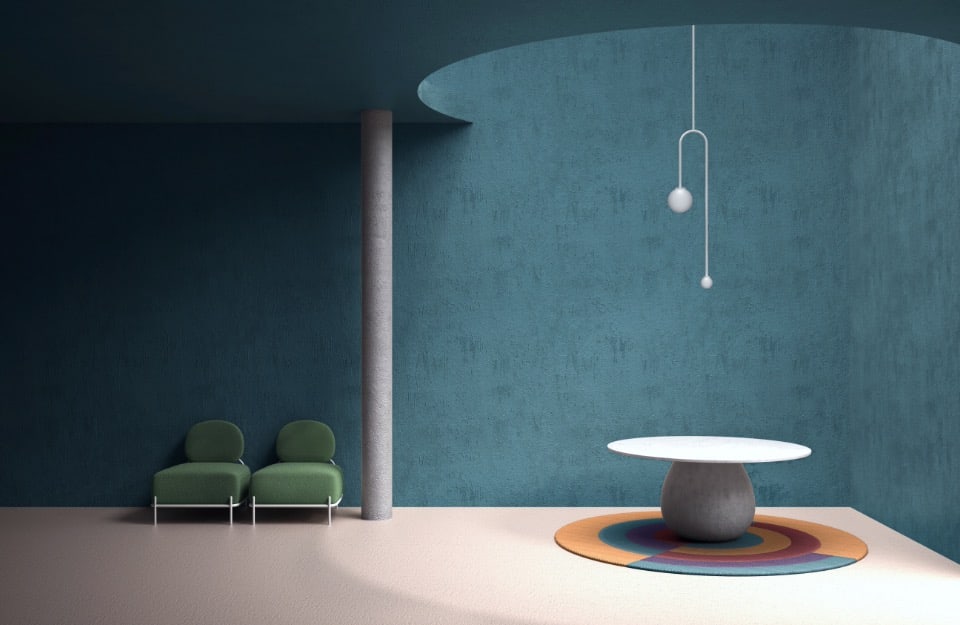 Whale blue is a versatile and elegant colour that lends itself to various combinations.
Whale blue is a versatile and elegant colour that lends itself to various combinations.
- White and grey: the combination of whale blue and white creates a clean and sophisticated contrast. Better, however, to add a third accent colour to avoid falling into an overly ‘seafaring’ effect (unless you want to follow the coastal style). The various shades of grey, on the other hand, enhance the sober and minimalist flavour of whale blue: it is a very elegant combination.
- Natural tones: shades of beige, taupe, light brown and sand are warm neutral shades that go well with whale blue, balancing its cold component, to create sophisticated yet cosy environments.
- Mustard yellow and ochre: earthy or ‘spicy’ yellows add a (controlled) touch of energy to the sobriety of whale blue.
- Important reds: colours such as burgundy and burgundy create an intense contrast with character.
- Pastel pink: powder pink or peachy pink enhance the more “dusty” and desaturated soul of this blue, creating an interesting contrast in contexts of romantic and jaunty elegance.
- Dusty greens: shades such as sage green go perfectly with whale blue: little contrast, great similarities, for subtle elegance.
Using whale blue as a primary colour
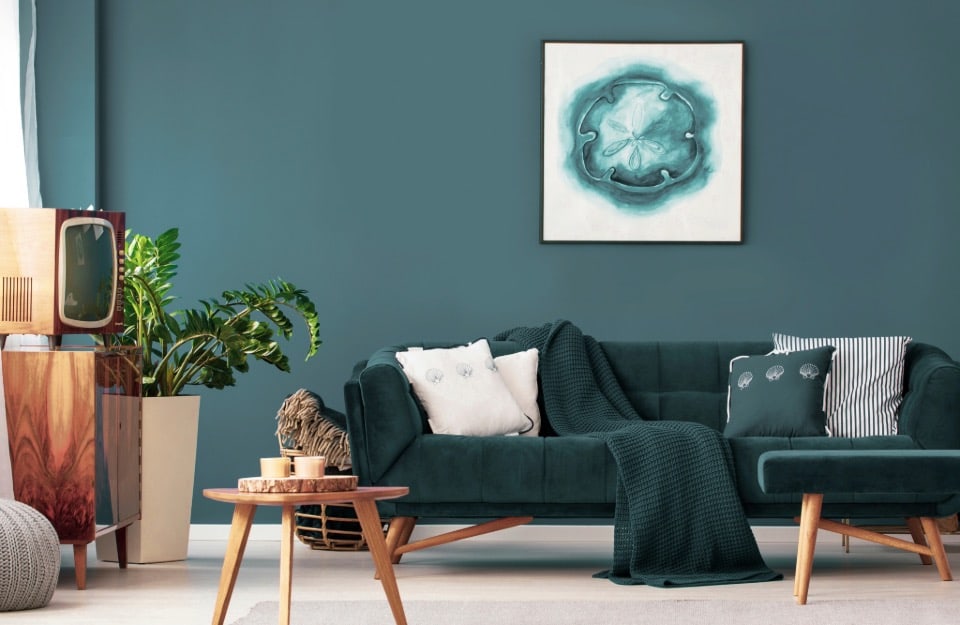 When used as a primary colour, whale blue dominates the room and dictates the overall atmosphere of the space. It is ideal for creating sophisticated, enveloping and relaxing environments.
When used as a primary colour, whale blue dominates the room and dictates the overall atmosphere of the space. It is ideal for creating sophisticated, enveloping and relaxing environments.
- Walls: leave at least one in a different colour, preferably neutral.
- Main furnishings: whale blue can be used for the sofa, the bed, a large sideboard that draws attention.
- Materials: apply whale blue to different textures (the wall, fabrics, leather, metal) to give depth to the room.
- A few furnishing tips: to prevent the room from looking too dark, we suggest balancing whale blue with light floors and ceilings. Use as a primary colour is preferable in rooms with plenty of natural light. To enrich the palette, metallic details in the colours of gold, brass or steel can be added. In this case, we suggest using a paint such as Rio Verde’s Golden Prestige. This is a highly opaque, metallic-effect enamel with which you can paint really anything: from wood to metal, glass to plastic, fabric and small portions of wall.
As a secondary colour
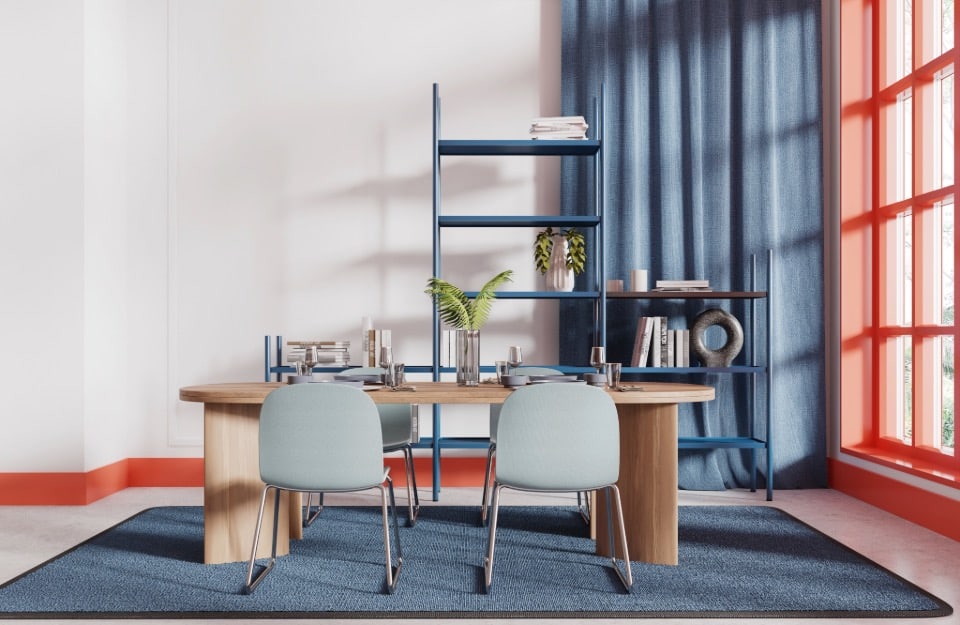 As a secondary colour, whale blue complements the primary colour and adds depth and interest to the space without completely dominating it.
As a secondary colour, whale blue complements the primary colour and adds depth and interest to the space without completely dominating it.
- Furniture and accessories: this blue can be used for items such as armchairs (and seating in general), sideboards, curtains, carpets and cushions.
- Accent wall: paint only one wall (the one you want to focus on) in whale blue, leaving the others in neutral colours.
- Decorations and secondary elements: whale blue can be recalled with vases, frames, lamps, linen (in the case of bedrooms or bathrooms) to create colour continuity and cohesion.
Whale blue as accent colour
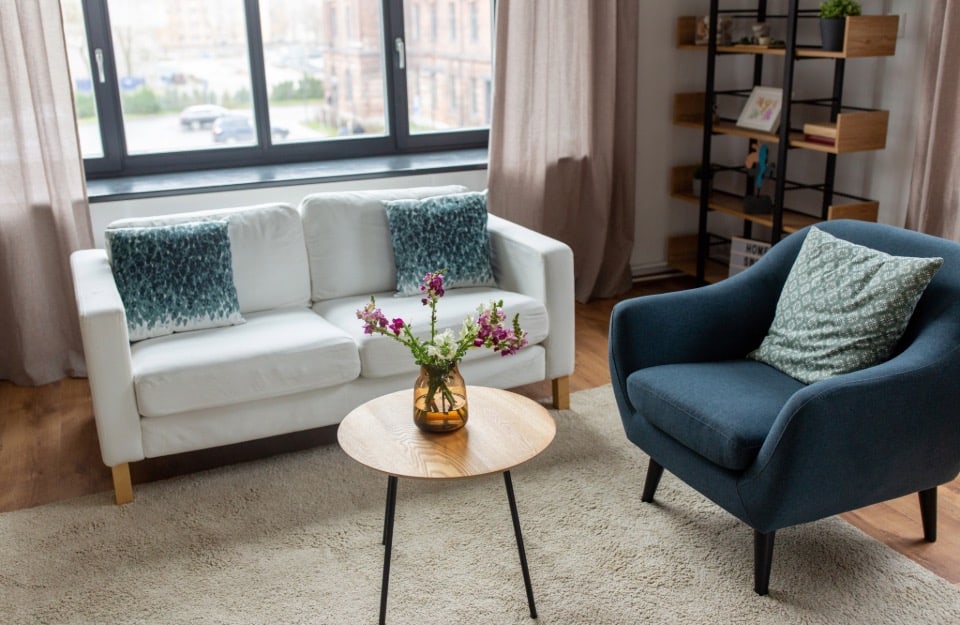 As an accent colour, whale blue is used in small doses to create contrast and highlight particular elements in the room.
As an accent colour, whale blue is used in small doses to create contrast and highlight particular elements in the room.
-
-
- Small pieces of furniture: a coffee table, an unusual chair or a lamp in whale blue can become attention-grabbing focal points, especially in an environment with more muted primary colours.
- Doors and fixtures: painting a door, window frames or other small architectural elements in whale blue can add a touch of elegance.
- Details and accessories: whale blue can be used on cushions, carpets, paintings, knick-knacks and small decorations. This works well in rooms with neutral or lighter palettes, where whale blue serves to give character without dominating.
-
What is the colour indigo?
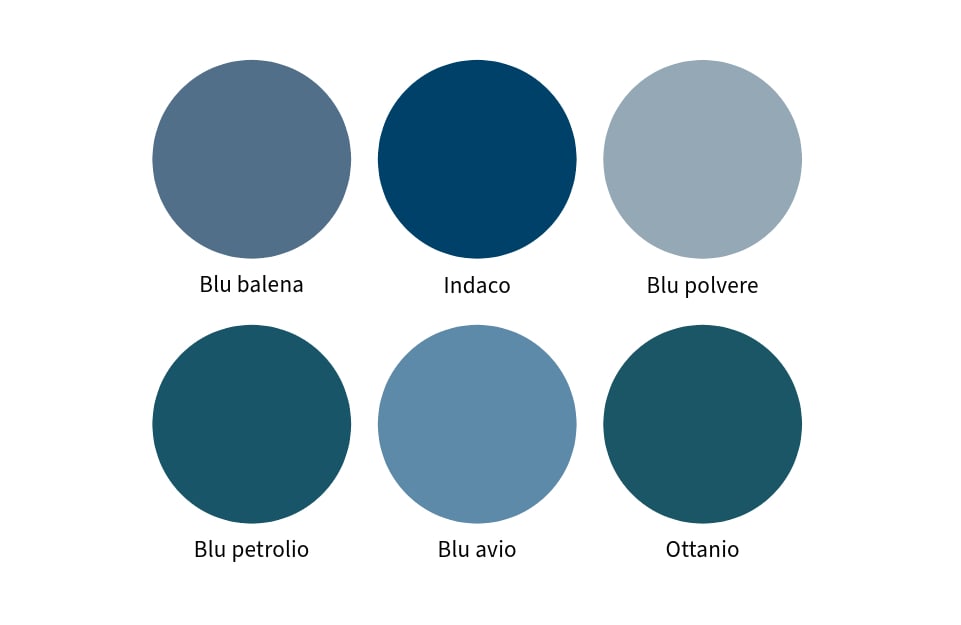 Indigo – best known for being one of the colours in the spectrum perceptible to the human eye – is a colour with many souls. As a pigment, mainly used for dyeing fabrics, it resembles whale blue, although it is darker and has less of a grey component. But there are other shades of blue that resemble whale blue (with which they can be combined for tone-on-tone combinations):
Indigo – best known for being one of the colours in the spectrum perceptible to the human eye – is a colour with many souls. As a pigment, mainly used for dyeing fabrics, it resembles whale blue, although it is darker and has less of a grey component. But there are other shades of blue that resemble whale blue (with which they can be combined for tone-on-tone combinations):
-
- powder blue (or powder blue): a lighter blue-grey than whale blue, with a greater grey component than sugar paper;
- petrol blue (or petrol green): an intense, deep range of shades between blue and green;
- air force blue: a dull blue with an undertone of grey;
- octanium: it is a dark turquoise, but lighter compared to petrol blue.

